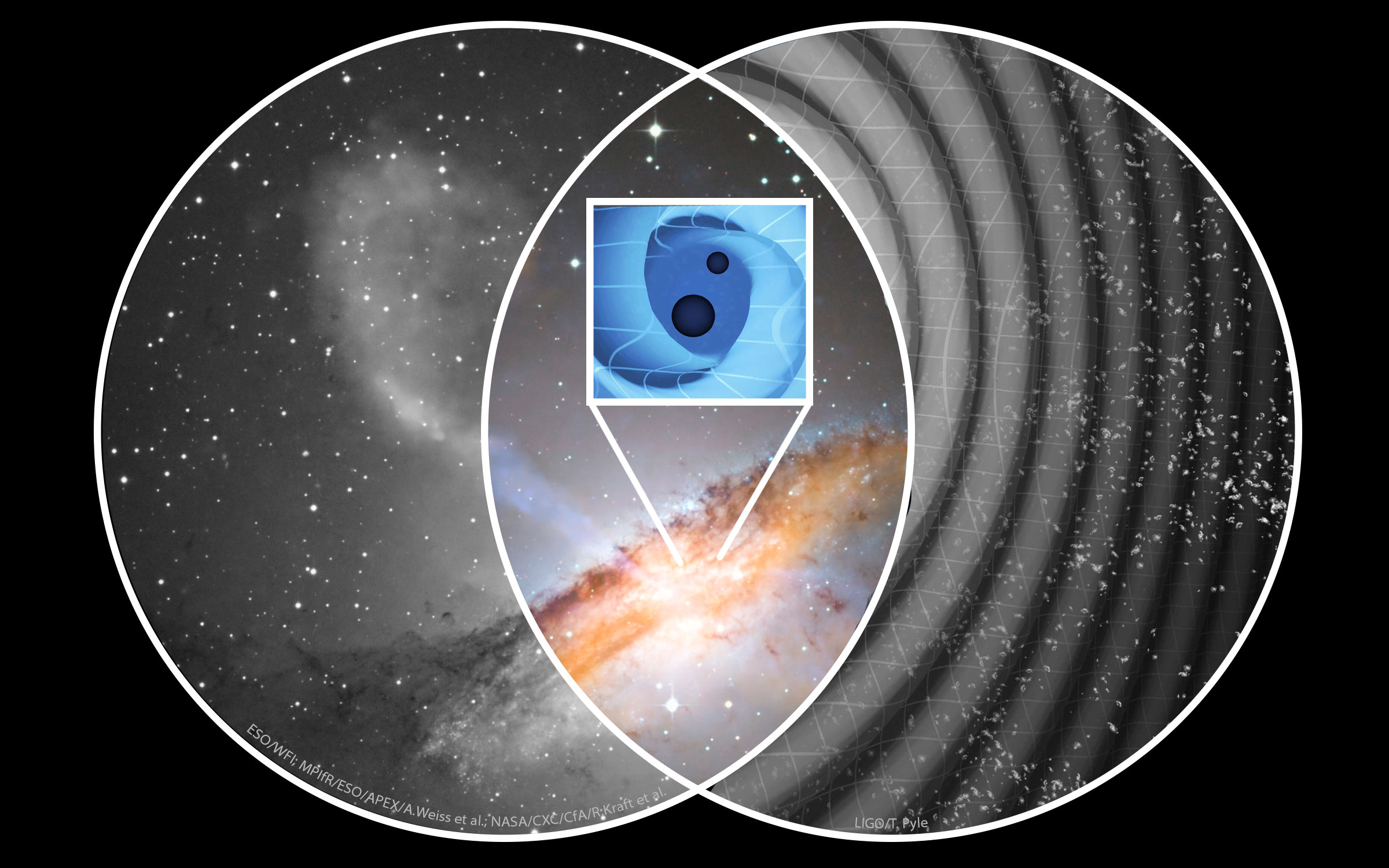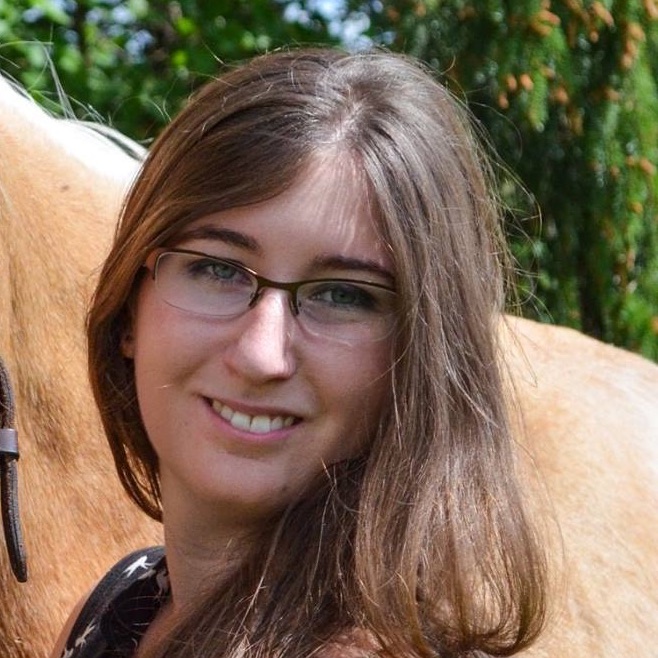My Research
Multimessenger astronomy allows us to combine information to see the universe like never before. Figure credit: Composite; Caitlin Witt. Components; ESO/WFI (Optical); MPIfR/ESO/APEX/A.Weiss et al. (Submillimetre); NASA/CXC/CfA/R.Kraft et al. (X-ray). LIGO/T. Pyle (GW).
Gravitational Waves
Gravitational waves are ripples in space-time caused by orbiting pairs of massive objects, like black holes and neutron stars. High-frequency gravitational waves, from stellar mass black holes and neutron stars, have been detected by ground based observatories. However, low-frequency gravitational waves, created by supermassive black hole binaries formed in galaxy mergers, have never been detected - until now.
The only detectors that can possibly find these signals are pulsar timing arrays, which are observatories spanning the Milky Way composed of naturally occurring objects called pulsars. With regular observations by the world’s most sensitive radio telescopes, over many years, we have built a galaxy-sized detector capable of probing the low-frequency gravitational wave universe.
I’m part of a pulsar timing array called NANOGrav, where I work to detect gravitational waves. To do this, I use supercomputers to handle the astronomical amount of data we’ve collected in our long-term experiment, as well as explore new and improved methods to search out these elusive signals.
For the very first time, we found evidence for gravitational waves in our 15-year data set, in the form of a low background rumble created by all of the low-frequency gravitational wave sources in the universe emitting at once in a gravitational cacophony. However, we’re not stopping here, and are constantly seeking what else the low-frequency gravitational-wave universe has in store.
Supermassive Black Hole Binaries
In addition to emitting gravitational waves, supermassive black hole binaries also create signatures that can be detected by traditional telescopes. These can be found in a huge variety of ways, across the entire electromagnetic spectrum.
My current method of choice to find these binaries is to look for periodic variations in the brightness of active galactic nuclei. As the binary moves in its orbit, it’s possible for the core of the host galaxy to be regularly brightened and dimmed.
However, finding these variations isn’t easy! These objects can vary all on their own, in a way that can mimic the signal from a binary. We need to think carefully about this confusion, and design experiments that can detangle these signals.
Multimessenger Astrophysics
By combining the electromagnetic and gravitational-wave signals from supermassive black hole binaries, we can learn more than either method could teach us on its own. Limits on binaries set with multimessenger methods can be even more sensitive, and will hopefully help us detect a low-frequency gravitational wave from a supermassive black hole binary sooner than we could in an ordinary search.
For more information about my work on multimessenger astrophysics with pulsar timing arrays, check out my work on the binary candidate 3C 66B! Here’s my summary, as well as the full paper
